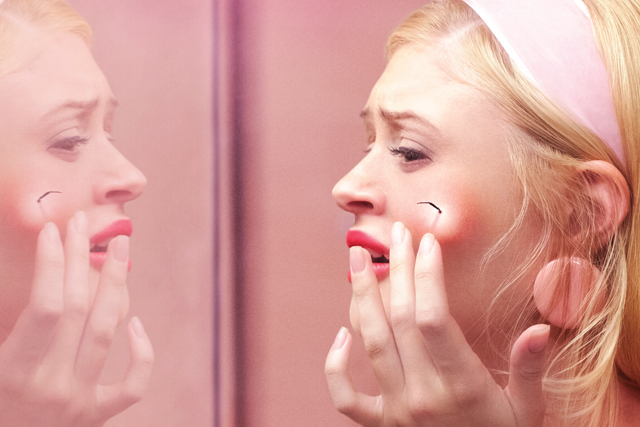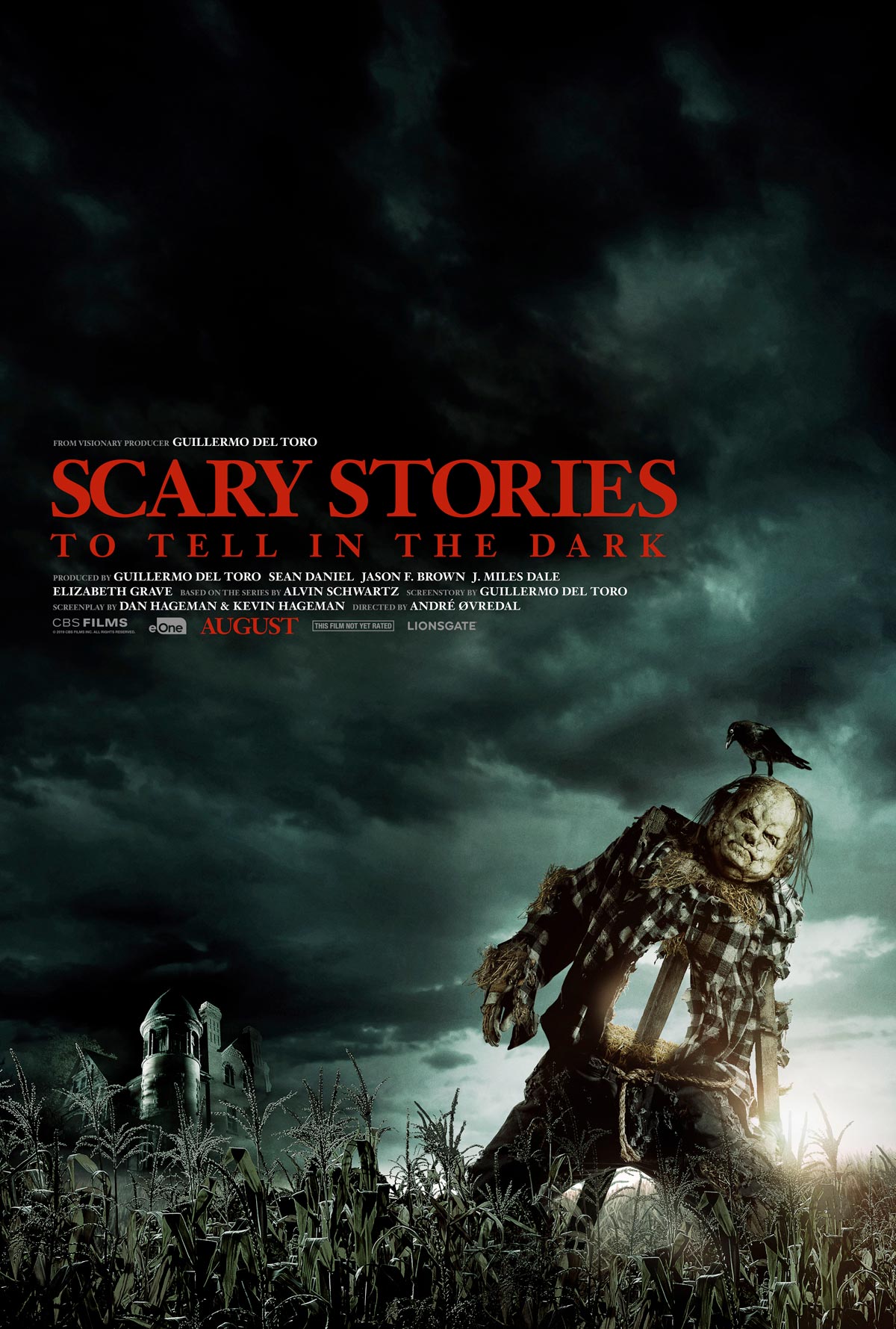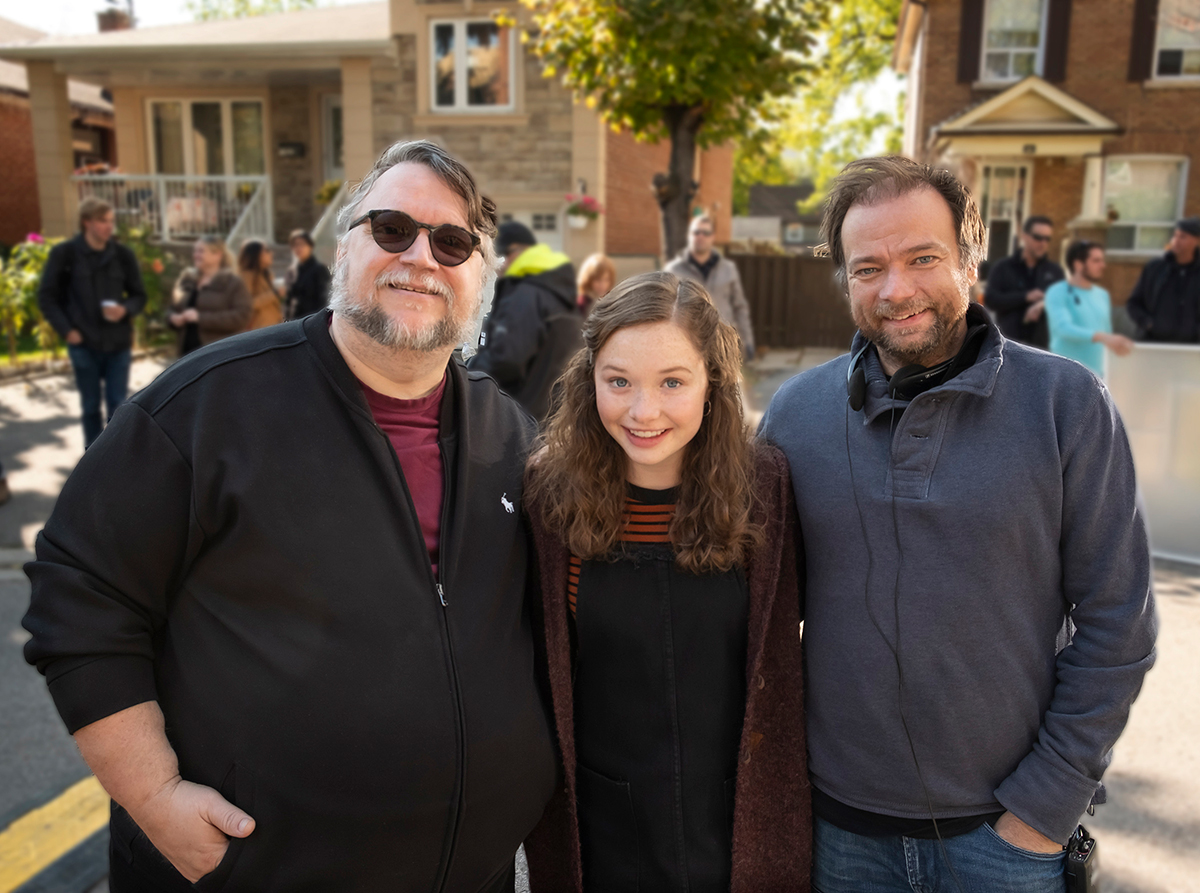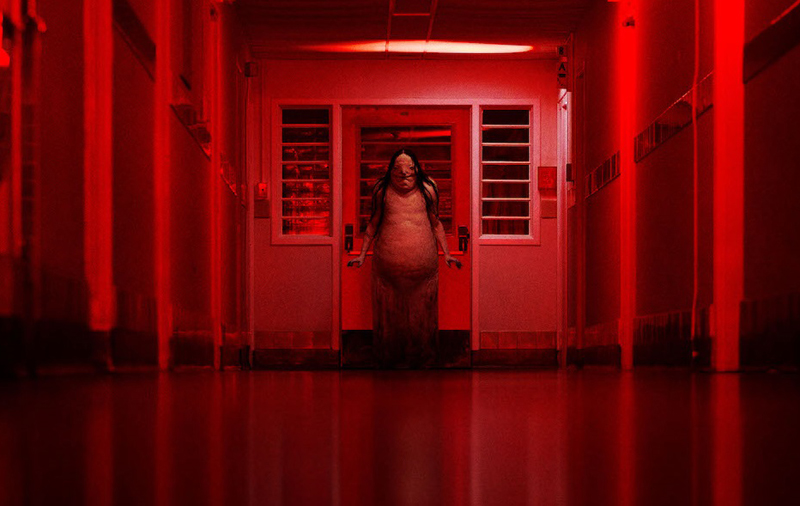With the film now playing in theaters everywhere, CBS Films provided ComingSoon.net with the chance to talk 1:1 with Scary Stories to Tell in the Dark director André Øvredal about working with producer Guillermo Del Toro to create a truly scary horror movie for kids. Check out the interview below!
RELATED: Scary Stories to Tell in the Dark Documentary Arriving This Spring
It’s 1968 in America. Change is blowing in the wind…but seemingly far removed from the unrest in the cities is the small town of Mill Valley where for generations, the shadow of the Bellows family has loomed large. It is in their mansion on the edge of town that Sarah, a young girl with horrible secrets, turned her tortured life into a series of scary stories, written in a book that has transcended time — stories that have a way of becoming all too real for a group of teenagers who discover Sarah’s terrifying home.
Scary Stories to Tell in the Dark will also star Zoe Colletti (Annie), Austin Abrams (Brad’s Status, Tragedy Girls), Gabriel Rush (Moonrise Kingdom, The Grand Budapest Hotel), Michael Garza (Wayward Pines, The Hunger Games: Mockingjay – Part 1), Austin Zajur (Fist Fight, Kidding), Dean Norris (Breaking Bad), Gil Bellows (Patriot, Jett) and Lorraine Toussaint (Into The Badlands, Selma, Orange Is The New Black) and Natalie Ganzhorn (Make it Pop, Wet Bum).
Pick up the original novels here.
The movie is directed by André Øvredal (The Autopsy of Jane Doe, Trollhunter) and is co-written by Daniel and Kevin Hageman along with Guillermo del Toro (Pan’s Labyrinth, The Shape of Water), who provided the screen story.
The Scary Stories to Tell in the Dark book series was first published during the 1980s, written/adapted from folklore by Alvin Schwartz and gorily illustrated by Stephen Gammell.
RELATED: The Scary Stories to Tell in the Dark Trailer is Here!

ComingSoon.net: Your first two movies were really well received by genre fans, but they only got boutique releases here in the States. What is it like to have a movie like this where you’re at the top of the machinery of a big studio release?
André Øvredal: It’s very gratifying to see how many people are planning to go to see the movie in a theater. I just saw some screen grabs of some movie theater just totally sold out tonight for the previews. That’s fantastic. I mean there are thousands of people coming to see a movie because the film is released properly. It’s been given a proper chance for a bigger audience. So it’s really an amazing experience.
CS: Watching the movie I feel like you guys did a sly thing in that, yes, this is based on the “Scary Stories” books, but really it’s an original movie that you’ve sort of Trojan horsed as a “Scary Stories” movie.
Øvredal: Yeah. No, I’m glad you see that because it’s I also feel it is its own original movie. It’s based on a decent IP, but we still had to make our own movie because there has never been a movie based on this. And it’s a special thing to make a feature film pieced out of little short stories, and trying to combine them. It becomes kind of an original movie by definition. You can’t do an actual adaptation of one single story. So you have to create something on your own. Yeah, that’s kind of what it is. It’s true.
CS: Were these stories from the book the ones that you particularly gravitated to? Or was that more you and Guillermo sort of going back and forth and cherry picking the ones that you wanted to do?
Øvredal: I mean this was a process Guillermo had before I got on board because he was supposed to direct it. He loves these books and his loves the drawings and everything around it. So he’s been developing this for two, three, four years or something, before I even got on board for him to direct. They had almost an American Idol kind of thing, where they just dwindled it down to the last few stories that they all agreed were the great ones that they wanted to put in the movie. That was the script I read. And we changed some things, and we took out one, and put it in another just before shooting. So that was a process they had, but it was definitely a big process to go through to choose those from all the hundred or whatever stories there are in the books.
CS: I think you were probably still a child when these books originally came out. Were you aware of them at all in your own country? Or was this a new property to you coming onto the film?
Øvredal: No, they were completely new to me because I grew up in Norway and they were never published there. I think they were published in Denmark actually, in the 80s. But I could never get ahold of them. I mean, even now, I haven’t been able to get ahold of a copy. So I didn’t know about them until I received the script. And then I read all the books. I got to know the world and the importance they’ve had, the cultural importance or impact that had on Northern America especially.
CS: Right. I’m sure you’ve heard this from a lot of people, but I was in elementary school in the eighties when these books were at their peak. Kids would literally fight to get them out of the school library. Every copy was dog-eared, had pages missing. We ate it up. It was like catnip for kids. That’s why I was so happy you stayed so true to the spirit of those books. They’re legitimately scary, and you didn’t try to carve the edges off of them, or water them down for children.
Øvredal: That’s really great to hear. I feel like we made the right version, even though we changed some things from specific stories. It feels like we’ve really tried to retain the spirit of that story, even in the changes we made to make it fit the equation of our own overarching story. I also wanted to stay very true to the spirit of the stories, which is kind of fun and playful. Sometimes especially in the first book, a lot of the stories end with, “And now your turn to the person next to you and say, BOO.” So we had to have jump scares, basically. You go, “BOO.” every now and then, and read it like literally under the bed, if you remember. That was such a thing from the books.

CS: Something that is always very annoying in YA horror films like this is things happen to the main characters, but by the end of the film everything is restored and Tabula Rasa. It’s as if nothing had happened. But this movie has real consequences for the main set of children.
Øvredal: Yeah. And that’s reality. Bad things do happen. And I think that there was a resonance in that, that works to the movie’s advantage. Guillermo was always wanting to do that. It was never a question that we were not going to go there. I’m happy we were able to stay true to that instinct.
CS: But of course you do kind of leave it open at the end, that it might be possible to bring to bring some of them back in a later film. Is that something that you guys architected already? Or are sequels something you’re taking a wait and see approach to?
Øvredal: I mean there are ideas. We’ve written certain things out that, you know, could become a sequel, but it wasn’t really planned to set up a sequel, weirdly enough. It was specifically because we wanted the character resolution to feel like that. But by definition, it sets up a potential for a sequel, and we have to just, in a way, wait and see. But we’ll know very quickly if there is economics in making a sequel, because that comes down to if the film was successful enough.
CS: Is a sequel something that you would hope to be involved in directing again?
Øvredal: Oh yeah, I’d love to. Yeah.
CS: In your mind, do you think it’d be better to pick up directly from the end of this film? Or do you think it would be cool to maybe jump forward and go a little bit into the 70’s for the next one?
Øvredal: I could answer that, but it’s premature. I feel like we need to make a decision on what direction, because there are several directions that you yourself immediately realize. There are several potential directions, and we have a direction we could go, that we’ve talked about. But it’s a little bit premature to talk about it publicly.
CS: It’s interesting to me that the film is set in the late sixties. There’s this other franchise going on concurrently with the Conjuring movies, which are set just a few years after. They have the same period feeling, but the one thing they never touch in those films is the politics of the era. But you guys went head-on into, dealing with Vietnam and the draft and racial issues and all of that. Can you talk a little bit about bringing politics into a YA film?
Øvredal: It’s a great opportunity to speak about certain aspects of the modern world and where we live today, what we experience today. The idea of lies being told, both politically around the world and personally. Both Sarah Bellows, the antagonist, and Stella were victims of lies and victims of being told rumors and bad things about themselves. That can quickly be related to the way social media can work. You know, if a lie comes out then it’s hard to pull it back in. Those kinds of things are very universal, between then and now. On a smaller scale and a much bigger scale now, it’s just a bigger village. It also relates to how politics can be tools for the truth or the perception of truth can be tools for politicians to explain things that they shouldn’t be doing. Not to be semi vague, but it was a great opportunity to be able to speak about today’s world that we feel like we live in through the eyes of a more naive America. Before America really realized that politicians were able to lie to you.
CS: You also had this amazing contrast between where you have this community galvanized to search for this one boy who’s missing, this Milner kid. Meanwhile, they’re just fine with sending other kids off to die in Vietnam.
Øvredal: Yeah, yeah. It’s a crazy contrast. That’s right. It’s very true.

CS: And of course, Alvin Schwartz passed away several decades ago, but Stephen Gammell the illustrator’s still alive. Did he have any input into the film? Or did he see the film?
Øvredal: I don’t know. I mean, we tried to get in contact with him, but he hasn’t really been that easy to get ahold of in the process. I mean, obviously we’re all blindingly loving his stuff. We think he’s an artist of the century. His art is amazing. So we’re all such a big fans of him, and we would love to have him see the movie and see what he thinks, but we haven’t actually been able to do that.
CS: Well you went to such loving care to recreate the look of so many of the characters from the books.
Øvredal: We love them, and we’ve been so detailed oriented about the creatures like the Pale Lady to make it exactly how it was supposed to be. So we had the sculptor, Mike Hill, sculpt it just like in the drawing. Even in moments when it wasn’t quite right, we had to go in and digitally augment it afterwards. Make it even closer to the feeling of the drawing. We’re proud of having paid homage to his amazing art.
CS: I’m a huge fan the horror films of the mid-to-late sixties. All the Roger Corman stuff, all the American International films. I’m just wondering if you have a favorite horror film from the era in which the movie takes place?
Øvredal: It is actually in the movie. It’s Night of the Living Dead. I thought that was an amazing film. I saw it when I was a kid. Obviously years later, I didn’t see it when it came out. I saw it on some UK TV channel that we got through a satellite system without subtitles. And I wasn’t that strong in English at the time. It made such an impact on just the starkness and the intensity of the film. I was just so happy that we could be able to use it, because the movie takes place on Halloween night and beyond, in our movie, 1968. And that movie came out in the States on October 1st. A month before. It was just so fitting that they would watch that movie. It was just perfect timing, and the way movies were released back then it wasn’t a blast with 3000 screens.
CS: Scary Stories and Night of the Living Dead have a kind of kinship because their imagery is, as you said, black and white, stark, unforgiving.
Øvredal: Yeah, exactly. So it was such a wonderful opportunity to pay homage to a film that has made so many people scared.
Scary Stories to Tell in the Dark
-
Scary Stories to Tell In The Dark Poster

-
Scary Stories to Tell in the Dark

-
Scary Stories to Tell in the Dark

The Red Spot poster
-
Scary Stories to Tell in the Dark

-
Scary Stories to Tell in the Dark











